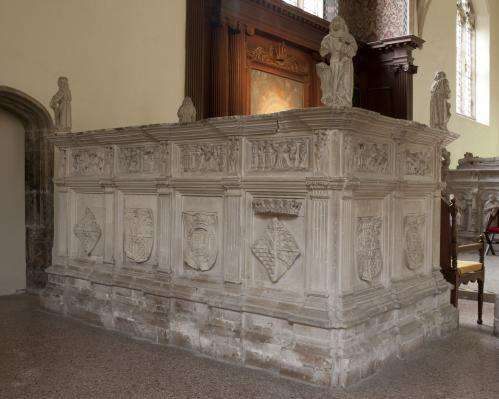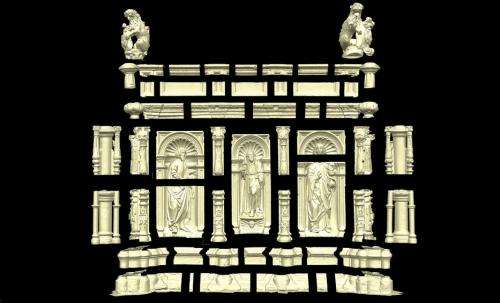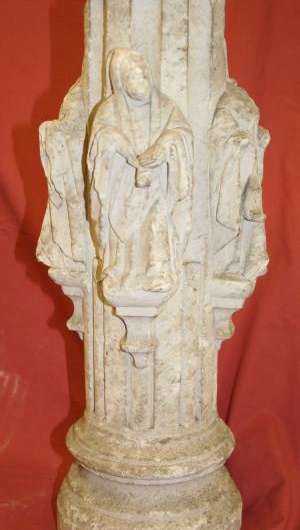Lost Tudor sculptures reassembled with help from 3-D scanning

University of Leicester experts have tried to recreate two Tudor monuments using a mixture of humanities research and scientific technology.
The experts have studied two tomb monuments which originally were intended to stand in Thetford Priory, Norfolk, in an exhibition at the Ancient House Museum, Thetford, Norfolk, from 7 September 2013 to 29 March 2014.
The elaborate tombs were planned by Thomas Howard, 3rd Duke of Norfolk – one for himself, and another for Henry VIII's illegitimate son, Henry Fitzroy, Duke of Richmond.
The tombs were not complete when the priory was dissolved in 1540. Some parts of the monuments were salvaged and later finished off in a different style and with different materials, in St Michael's Church, Framlingham, Suffolk.
Other parts were abandoned in the ruins of the priory and were discovered by excavators centuries later: those parts are now scattered in various museums - including the British Museum - and stores.
The researchers have now brought together all these pieces, and used drawings in 16th century manuscripts, 3D laser scanning and 3D prints to recreate the monuments as they were originally intended.
The project is one of the exciting results of research by the "Representing Re-Formation" project team, funded by a major grant from the Science and Heritage Programme (AHRC and EPSRC).
The project is a remarkable collaborative venture involving researchers at the University of Leicester's Space Research Centre, the Department of the History of Art and Film, School of Museum Studies and the Department of Computer Science.

They worked with colleagues at the University of Oxford and Yale University as well as colleagues in English Heritage and the Norfolk Museums and Archaeology Service.
Dr Phillip Lindley, of the University of Leicester's Department of the History of Art and Film, said: "Our exhibition studies the catastrophic effects of the Dissolution of Thetford Priory and of Henry VIII's attempted destruction of Thomas Howard, third duke of Norfolk, on the ducal tomb-monuments at Thetford.
"Parts of two unfinished monuments were salvaged in 1540 and later moved to St Michael's, Framlingham, Suffolk: other pieces were abandoned in the ruined priory, only to be excavated in the nineteenth and twentieth centuries.
"With English Heritage's help, we have managed to reunite the excavated pieces, which are scattered across various different museums and stores. It is wonderful that the British Museum have also loaned their two sculptures from the group.

"Using 3D laser scanning and 3D prints, we have - virtually - dismantled the monuments at Framlingham and recombined them with the parts left at Thetford in 1540, to try to reconstruct the monuments as they were first intended, in a mixture of the virtual and the real.
"We are delighted to work with the curator of the Ancient House Museum, Oliver Bone, and his staff. The museum is a few hundred yards from the priory site where the tomb-monuments were first carved nearly five hundred years ago.
"The Ancient House is itself a Tudor building and it is a surprising thought that the original sculptors probably walked past the very building in which we are now exhibiting their work."
Provided by University of Leicester


















